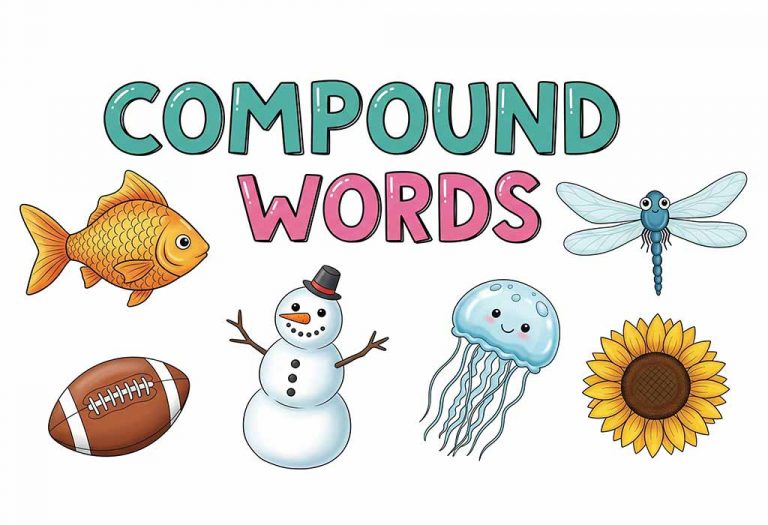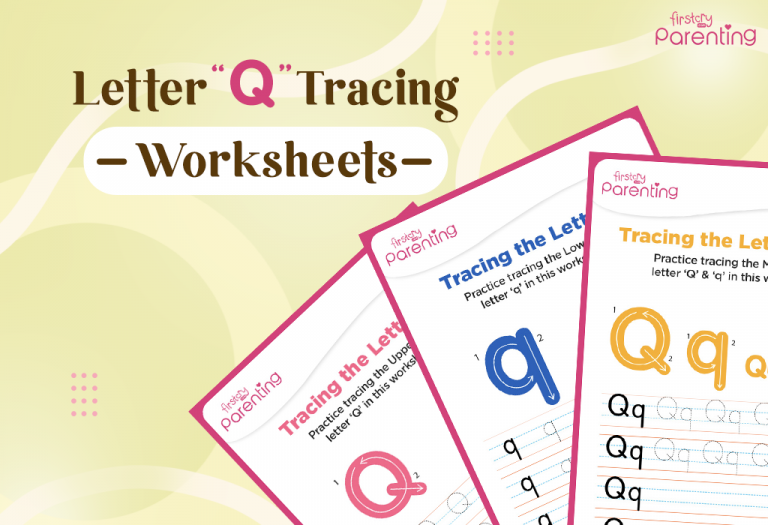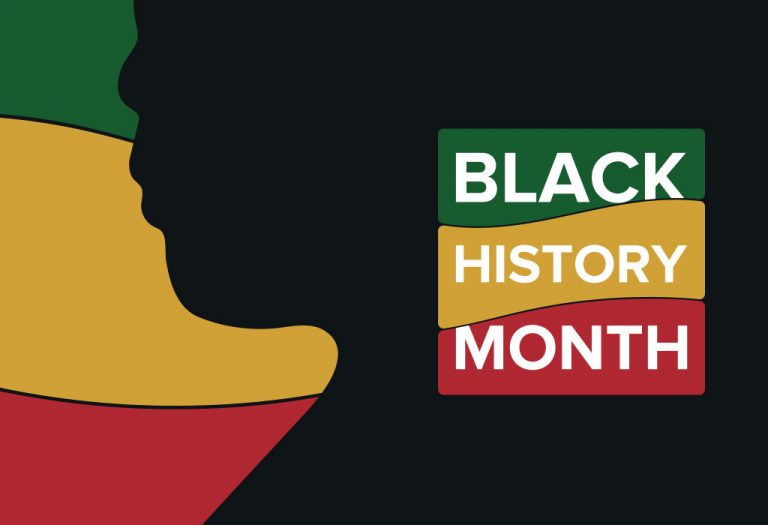Compound Words for Kids – Definition, Types, Benefits, and Examples
Have you ever seen two ordinary words come together and make something totally new? That’s the magic of compound words! For kids just learning to stretch their vocabulary, this can be such a fun part of reading and writing. Think of a snowman. It’s not just “snow” and “man”—it’s that frosty friend we build in the yard when winter rolls in! Compound words help children understand how language grows and connects, and once they catch on, it becomes like a puzzle game they can’t stop playing.
Teaching compound words in English is a great way to encourage kids to be curious about how words work. Whether your child loves books, drawing stories, or even naming their toys, learning about compound words makes their language more colourful and creative. In this article, we’ll explore what these words are, the different types, how they help young learners, and, of course, some fun examples!
What Is a Compound Word?
A compound word is made when two small words are joined to form a new word. This new word has its own meaning and is often easy for kids to understand when they look at the parts. Teachers and parents use these words to help children grow their vocabulary. If you want to define a compound word, just say it is two words that become one. Kids enjoy finding these in books or making them up for fun. Learning compound words for kids can be both playful and helpful for reading and writing.
Here are some easy and fun compound word examples kids can learn and remember
- Toothbrush
- Rainbow
- Cupcake
- Snowman
- Football
- Bookshelf
- Starfish
- Sunflower
How Are Compound Words Formed?
Compound words are formed by joining two smaller words to make one new word. Each small word has its own meaning. When they come together, they create a new meaning. Some are written as one word, like toothbrush. Others stay apart like ice cream. Some use a hyphen like mother-in-law.

Image Credit: Pinterest
When to Teach Compound Words to Kids?
You can start teaching compound words when kids begin to read simple words. This is usually around age five or six. At this age, they can understand how two words can come together. It is best to begin with fun and common words like snowman or cupcake. Use pictures and games to make it easy and fun. Teaching slowly with real-life examples helps kids learn better.
Benefits of Teaching Compound Words to Kids
Teaching compound words to kids helps them become better readers and improves their vocabulary. These words make learning fun and show children how smaller words come together to form new ones with different meanings. It also builds their confidence and makes spelling easier over time.
1. Improves Vocabulary and Word Knowledge
When children learn compound words, they are exposed to many new words at once. For example, the word sunflower teaches them both sun and flower. This way, they understand the meaning of each part and how they work together. It builds their vocabulary naturally and helps them improve their use of new words in sentences.
2. Makes Reading More Enjoyable
Compound words often appear in storybooks, rhymes, and everyday reading material. Once kids know how to break them into parts, they find it easier to understand longer words. It reduces reading frustration and makes stories more fun to read. They can guess meanings from familiar parts, which boosts their interest in reading more.
3. Encourages Better Spelling
Learning how two words join together helps children understand spelling patterns. Words like notebook or basketball become easier to spell when kids see them as smaller words joined together. It also helps them identify which letters go where and makes them more confident while writing new words on their own.
4. Builds Word Formation Skills
Understanding compound words lays the foundation for building new words. Children become more aware of how language works and can even try creating their own compound words. This builds creativity and makes language lessons more exciting. They learn that language can be flexible and fun when words are combined smartly.
5. Helps in Daily Communication
Compound words are commonly used in everyday life. Teaching them early helps children understand common words like toothbrush, raincoat, or birthday. Learning such words improves their listening and speaking skills because they can understand and use such words in conversations. It also makes schoolwork and activities easier for them.

Image Credit: Pinterest
Different Types of Compound Words
Compound words are made by joining two or more smaller words to create a new word with a different meaning. These words help children understand how language works and improve both reading and writing skills. There are three kinds of compound words that children can learn easily through examples and fun activities.
1. Closed Compound Words
Closed compound words are single words with no spaces or hyphens. They are very common and often used in daily language. Examples include ‘sunflower,’ ‘notebook,’ and ‘classroom.’ Kids can spot these words in storybooks or school lessons. Learning closed compound words improves spelling and reading fluency because they look like long words but are made from simple parts. This type is helpful while teaching compound word examples in early classes.
2. Open Compound Words
Open compound words are written with a space between the two words. Even though they are two separate words, they work together to form one idea. For example, ‘post office,’ ‘ice cream,’ and ‘full moon’ are open compound words. Children can learn them by matching word pairs and using them in simple sentences. Teaching open compound words also helps improve vocabulary and daily communication. These are great for explaining the types of compound words to kids in a fun way.
3. Hyphenated Compound Words
Hyphenated compound words are spotted with the help of a hyphen. The words are connected using a hyphen in the middle. They are often used in writing to avoid confusion or to join two words that work together. Some examples are ‘mother-in-law,’ ‘well-known,’ and ‘part-time.’ These words help kids understand punctuation and sentence structure better. By using picture cards or worksheets, parents and teachers can make this concept more engaging. This is one of the three types of compound words that can be taught with easy examples.
4. Blended Compound Words
Blended compound words are created by combining parts of two words rather than whole words. These are less common but still important for learning word formation. Examples include ‘brunch’ (breakfast + lunch) and ‘smog’ (smoke + fog). Teaching blended words can help kids discover how language evolves. This also builds creativity and word-building skills. It adds to the overall understanding of three kinds of compound words in a more modern and interesting way.
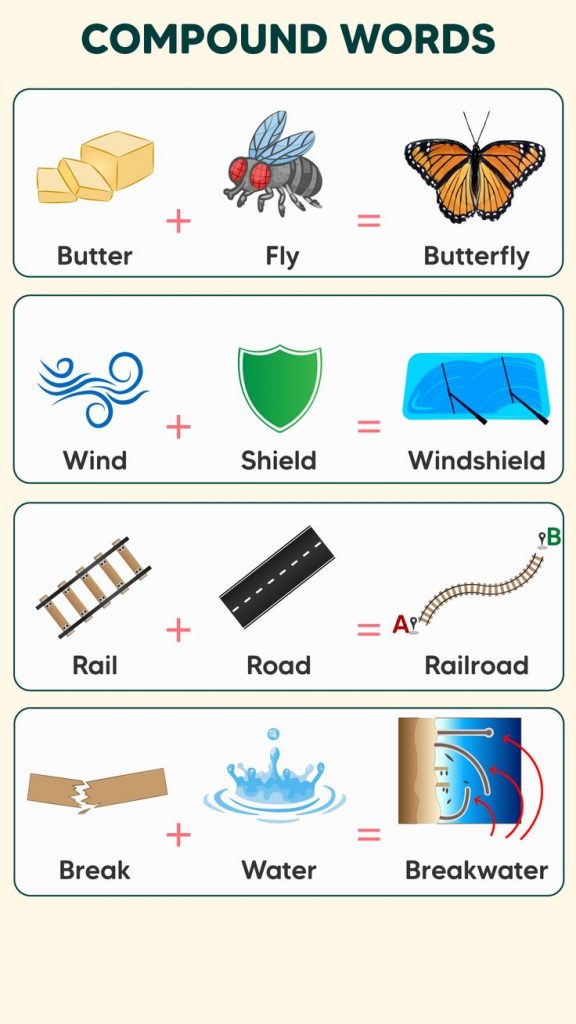
Image Credit: Pinterest
List of Compound Words for Kids
Kids come across many compound words every day while reading or speaking. Learning these words helps them grow their vocabulary and understand word meanings in a better way. Below is a simple and fun list of some compound words that children can learn and enjoy using.
This is a commonly used compound words list A to Z to help kids see how these words are formed. Each word is made by joining two simple words to create a new meaning. Here is a table of 200 compound words to explore.
| Column 1 | Column 2 | Column 3 |
| Airport | Armchair | Afternoon |
| Backpack | Baseball | Bedroom |
| Birdhouse | Bookshelf | Boardwalk |
| Bookstore | Brainstorm | Bunkbed |
| Butterfly | Carpool | Cartwheel |
| Chalkboard | Cupcake | Daydream |
| Doorbell | Dragonfly | Earthworm |
| Eyeglasses | Firefighter | Firefly |
| Fishbowl | Football | Footprint |
| Hairbrush | Haircut | Handshake |
| Handbag | Headphones | Homework |
| Horseshoe | Houseboat | Iceberg |
| Ice cream | Jellyfish | Keyboard |
| Ladybug | Laptop | Lighthouse |
| Mailbox | Moonlight | Newspaper |
| Notebook | Pancake | Playground |
| Popcorn | Postcard | Raindrop |
| Rainbow | Sailboat | Sandbox |
| Shoelace | Skyscraper | Snowball |
| Snowflake | Snowman | Spaceship |
| Starfish | Starlight | Stopwatch |
| Strawberry | Sunglasses | Sunflower |
| Sunrise | Sunset | Superman |
| Supermarket | Tablespoon | Tailbone |
| Teacup | Toothbrush | Toothpaste |
| Treehouse | Turtleneck | Underwear |
| Volleyball | Waistcoat | Wallpaper |
| Wardrobe | Washing machine | Waterfall |
| Waterproof | Wheelchair | Windmill |
| Windowpane | Windshield | Workshop |
| Wristwatch | Zookeeper | Zipline |
These words are simple and easy to remember. Using a fun table like this helps kids find and learn new words quickly. Let your child explore this table and pick their favourites to use in writing or games.
Some Compound Word Sentences for Kids
Using compound words in simple sentences helps kids understand how these words work in real life. It also shows them how two small words can come together to create a new meaning. Below are easy sentences for children to read and learn from. Each one is an example of compound words with meanings that is clear and fun to read.
Here are 10 simple sentences with compound words:
- I packed a cupcake in my lunchbox.
- The rainbow appeared after the rain stopped.
- We built a snowman in the front yard.
- My dad used a toothbrush after breakfast.
- She wore sunglasses on the sunny beach.
- He found a starfish while walking near the sea.
- Mom rang the doorbell before walking in.
- I read a storybook before going to bed.
- The football match was fun to watch.
- We saw a ladybug on the flower.
Each sentence helps kids see how compound words fit naturally in daily talk. These are great for reading practice and learning new words with fun.
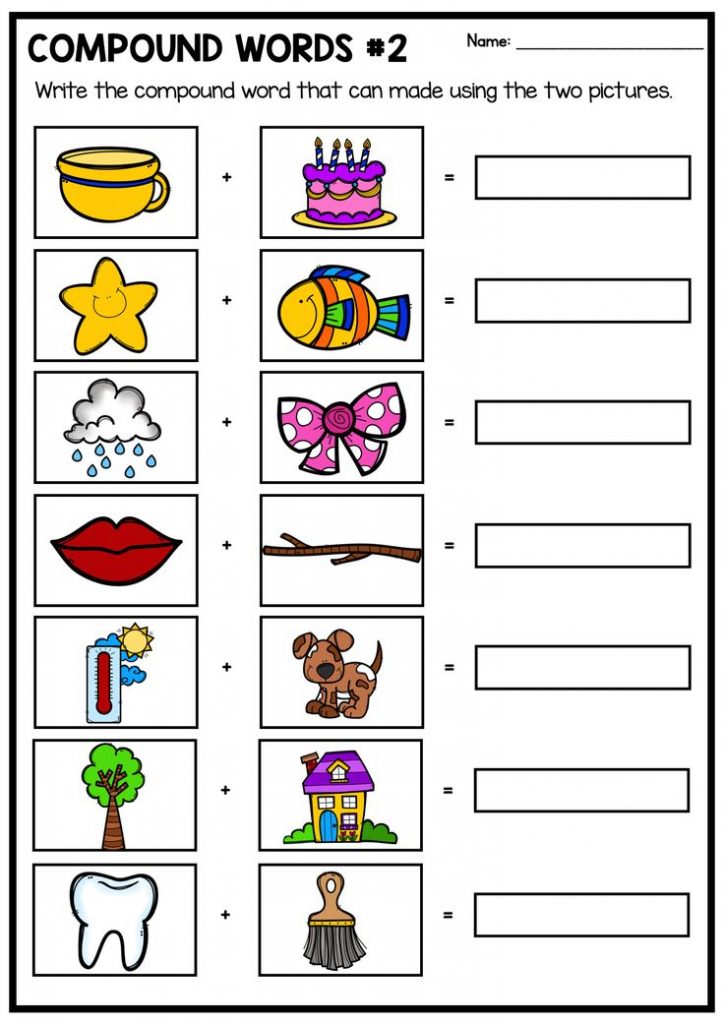
Image Credit: Pinterest
How to Teach Compound Words to Kids
Teaching compound words can be easy and fun when done in a simple way. Kids enjoy learning when they see how two small words turn into one new word. These methods are great for home or classroom and work well when teaching a compound word for kindergarten learners, too. Thus, helping kids learn while building strong word skills step by step.
1. Use Pictures
Show pictures of things like a ‘snowman’ or ‘cupcake,’ and ask kids to name the parts.
2. Word Matching Game
Give kids cards with words like tooth and brush, and let them match them.
3. Read Storybooks
Pick books that have simple compound words and read them aloud.
4. Play Word Puzzles
Use fun puzzles where kids join two words to form one.
5. Make a Compound Word Chart
Hang a chart with colourful compound words for daily learning.
6. Use Real Life Examples
Point out things at home, like ‘mailbox’ or ‘toothbrush,’ and say the word parts.
7. Sing Songs or Rhymes
Create or use rhymes that include compound words for better memory.
8. Let Kids Create Their Own Words
Ask them to make silly or real compound words by joining two things they know.
FAQs
1. Why should kids learn compound words early?
It helps children grow their word power and understand word meanings better. It also builds reading and spelling skills in a fun way.
2. What are some good compound words for classes 1, 2, and 3?
Words like toothbrush, rainbow, football, cupcake, and snowman are easy and fun compound words for classes 1, 2, and 3 young learners. These words are part of daily life and help kids connect learning with things they see around them.
Compound words are a fun and innovative way to help kids grow their vocabulary. They show how simple words can come together to create something new and valuable. Learning them builds reading, spelling, and speaking skills. Kids enjoy spotting these words in books and using them in stories. Teaching compound words with games, songs, and pictures makes learning easy and fun. Whether in class or at home, they are perfect for kids of all ages. Start early and let kids explore the magic of words every day.
Also Read:
Concrete Noun for Kids
Opposite Words for Kids
How to Teach English to Kids?
Was This Article Helpful?
Parenting is a huge responsibility, for you as a caregiver, but also for us as a parenting content platform. We understand that and take our responsibility of creating credible content seriously. FirstCry Parenting articles are written and published only after extensive research using factually sound references to deliver quality content that is accurate, validated by experts, and completely reliable. To understand how we go about creating content that is credible, read our editorial policy here.





